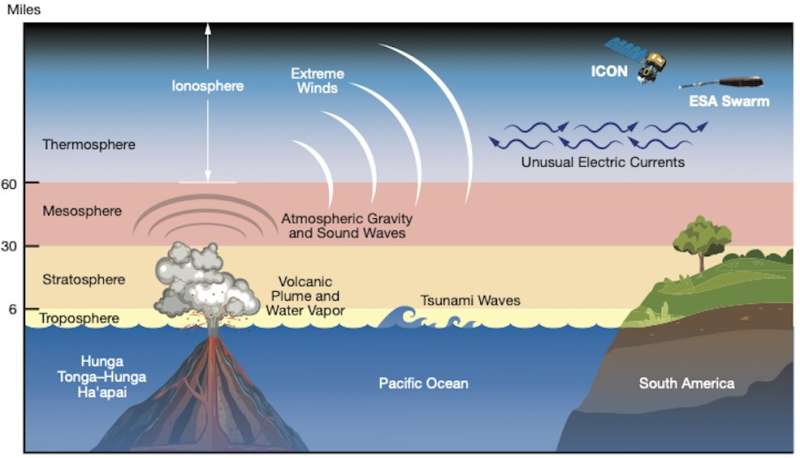Phys.org May 10, 2022
Analyzing data from NASA’s Ionospheric Connection Explorer (ICON) mission and ESA’s Swarm satellites, an international team of researchers (USA – UC Berkeley, University of Colorado, Germany) found that in the hours after the eruption, hurricane-speed winds and unusual electric currents formed in the ionosphere. Upon reaching the ionosphere and the edge of space, ICON clocked the windspeeds at up to 450 mph. After the eruption, the equatorial electrojet surged to five times its normal peak power and dramatically flipped direction, flowing westward for a short period. According to the researchers this is something we’ve only previously seen with strong geomagnetic storms, which are a form of weather in space caused by particles and radiation from the sun. The new research is adding to scientists’ understanding of how the ionosphere is affected by events on the ground as well as from space. A strong equatorial electrojet is associated with redistribution of material in the ionosphere, which can disrupt GPS and radio signals that are transmitted through the region…read more. TECHNICAL ARTICLE

The Hunga Tonga-Hunga Ha’apai eruption on Jan. 15, 2022, caused many effects, some illustrated here… Credit: NASA’s Goddard Space Flight Center/Mary Pat Hrybyk-Keith